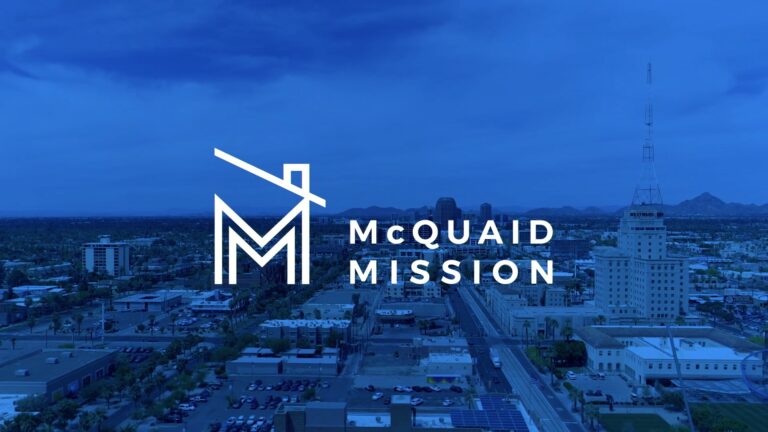Download our app to discover how you can take action against homelessness!
Kristen Keogh, Host
McQuaid Mission Episode 9 Highlights
Over 11,000 Arizona residents are homeless.
Every other week we dedicate a full episode to the news, progress and innovations surrounding homelessness in Phoenix with our McQuaid Mission series.
This week’s episode explores how homelessness disproportionately affects people of color. For example, Black people are nearly four times more likely to be homeless in Maricopa County. That number is double for Native Americans
Read the highlights from Episode 9 of the McQuaid Mission below.
Look internally at your organization to see how you can start addressing those issues; and then you can start working externally to tackle some of the disparities that we’re seeing.
Be The Change
“Looking internally first is what matters.What does your board makeup look like? What do the people on the frontlines actually look like? How are they better serving the community?” explains Nicky Stevens, Regional Homelessness Program Manager at the Maricopa Association of Governments (MAG).
Stevens explains that MAG has been collecting data to better understand the relationship between race and homelessness for years. After years of research, MAG offers educational opportunities for anyone in Maricopa County. They can provide nonprofit organizations, businesses and residents with information and resources.
It’s really hard when you don’t have anyone to turn to, especially when you’re in a state with no family. The hand that they extended just made me feel so safe and so welcome, not embarrassed, not prideful — I felt like I belonged at that moment.
Save the Family Success Story
At one of Ebony’s most difficult times in life, she felt completely alone. Ebony explains that the sense of safety, trust and belonging she received from her experience with receiving support from Save the Family is what really helped push her through and out of her struggle with homelessness. Being able to focus on her career without the worry of having a place to sleep or food to eat made a massive impact on her success.
Local
Leader to Leader Q&A
Q: Is donating enough for the general public to address homelessness?
A: Giving us resources allows us to help one person at a time. We…really believe that it’s possible to end homelessness and to break the cycles that lead to homelessness and that takes different work than the giving of gifts. It takes the giving of time and your voice. It means advocacy. It means voting. . .
I don’t care if you spend one night homeless, one week, one month, one year: there’s trauma involved in that. It’s frustrating for our clients to be dehumanized.
Free Love
“It’s really important that our clients have hope. Today might not be the day they want to get a job or are able to get a job. But, just like me, there was hope put in and I was given the opportunity to change my life,” says Brent Downs, Executive Director at St. Joseph the Worker. His primary role at the organization is to connect people who are homeless to jobs.
But, Downs also provides and invaluable service to each client he works with (that’s not in the job description): love. Downs personally experienced homelessness. He understands how the difficulty to access basic needs like food and hygiene sabotages a person’s ability to prepare for a job, and then working out the logistics of maintaining employment. Downs tells each client he works with that he loves them and puts in overtime to connect and make them feel valued.
Homelessness Mythbusters
Myth: Isn’t it the government’s job to “deal” with homelessness?
“The government certainly has a role to play when it comes to homelessness. . .There are definitely historical policies that were created to make it harder for people of color to own their homes, to live in affordable communities near public transportation. . . For those of us who are doing the work today, we’re not waiting for the government to come-up with the “grand solution.” However, the things we know that work… We need the government to play a role in that. We need them alongside us.”



